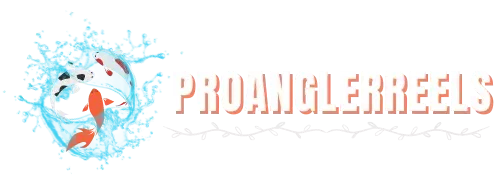Can You Use Spinning Reel For Trolling? Everything You Need To Know
Technically, spinning reels can be used for trolling, but they are not ideal. Using a spinning reel for trolling presents certain challenges that would have been impossible to accomplish in the past.
The question that should be answered here is “Can you use spinning reel for trolling?”
With today’s technologically advanced spinning reels, trolling is certainly possible. You can use a braided fishing line to boost the reel’s capacity and increase line strength.
So, it can be established that spinning reels can be used for trolling as long as they can withstand the rigors of trolling.
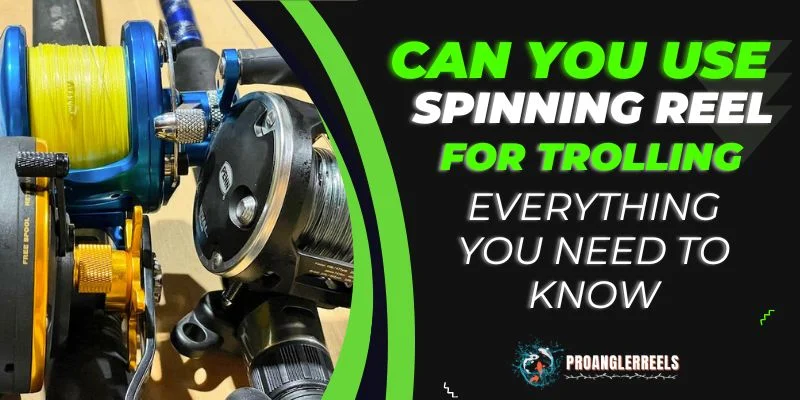
Hence, you will need a heavy spinning reel for trolling that has the ability to withstand a large amount of pressure like a baitcasting reel.
What Kind of Spinning Reels Can Be Used for Trolling?
If you are planning to use a spinning reel for trolling, you need to make sure that they meet certain criteria. Not every spinning reel can be used for trolling.
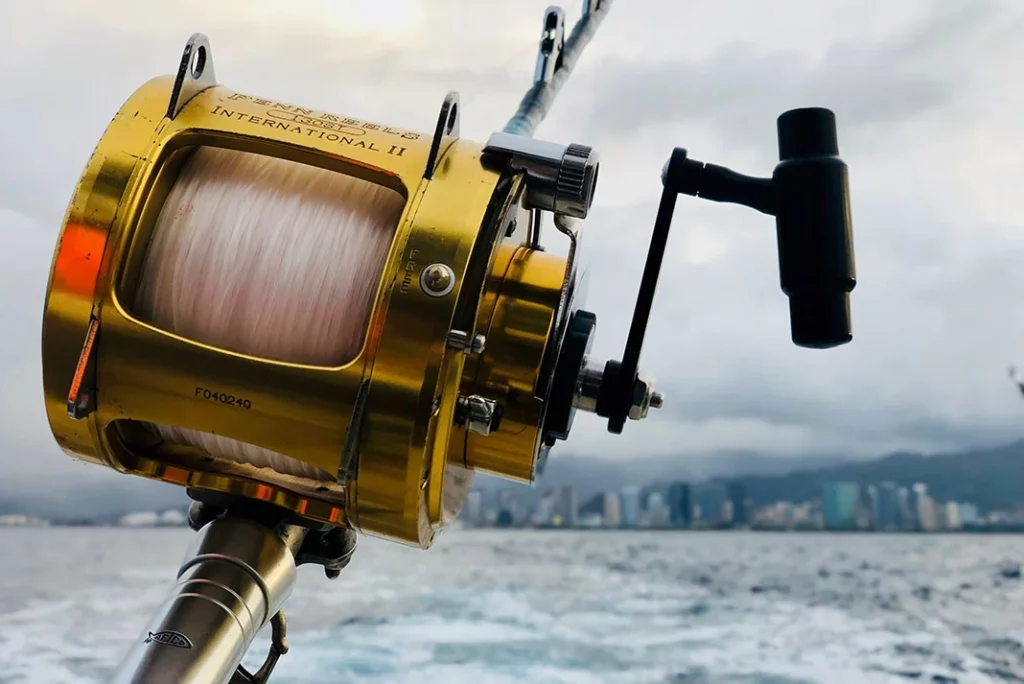
Here are the key features that you must ensure when selecting a spinning reel for trolling:
You must keep in mind that spinning reels are not ideally made for trolling. So, even with these features in your reel, trolling can be a bit challenging. There is no spinning reel that would make trolling a piece of cake.
Check Why Does My Reel Keep Spinning?.
What Kind of Rod You Should Use for Trolling?
Just like you cannot use any reel for trolling, the rod requirements are also very strict. You cannot use a long and whippy rod for trolling, as it won’t allow you to feel the vibration coming from the caught fish.
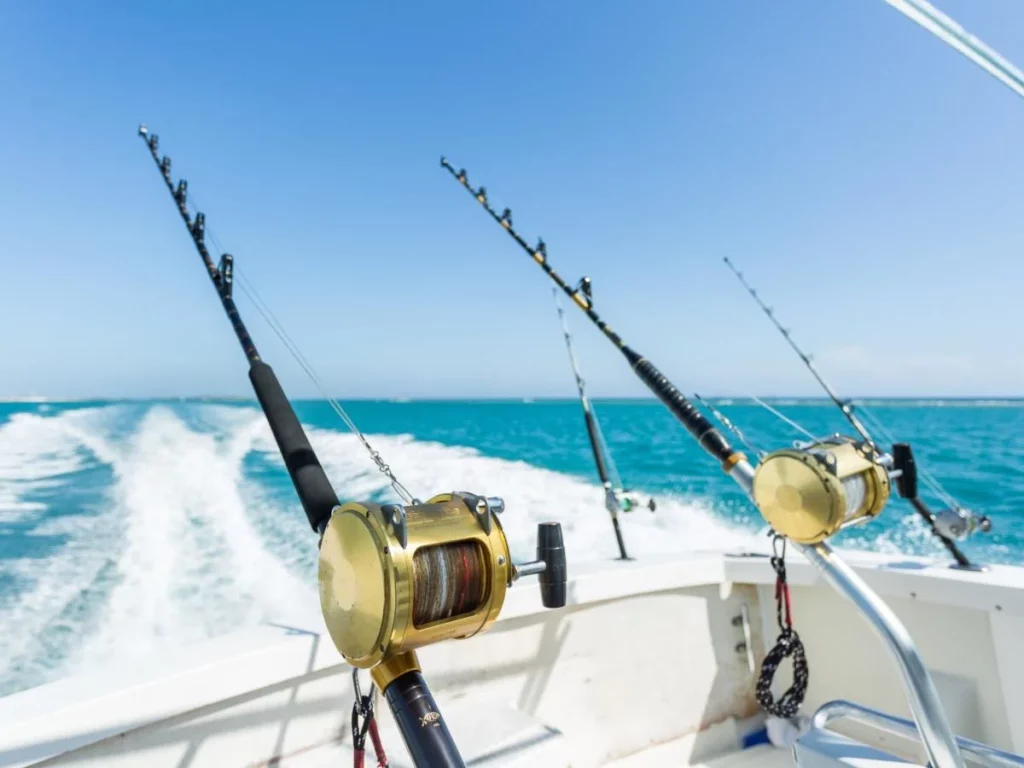
When you troll a lure behind your boat, there will be a constant tension between your rod and line. Hence, you will need a short and stiff rod that is both effective and instantaneous.
Another benefit of having a short and stiff rod is that it will snag immediately from a slump or log. Hence, the line won’t twist or tangle.
Check How Do I Stop My Reel From Spinning Backwards?
Moreover, long rods are quicker to snap and bend. You wouldn’t want your rod to bend while trolling.
Hence, you must use a rod that is powerful enough to handle the pressure while trolling without snapping.
Moreover, the right type of rod will allow you to catch a fish by trolling without disturbing the rest of the school of fish. Hence, you will be able to catch more fish from the same area.
You should go for a rod that is short and stiff. It should be no longer than 9 feet and must possess the strength to handle extreme pressure without snapping.
Also, rods with roller guides are preferred for larger species in saltwater.
Pros of Trolling with Spinning Reel
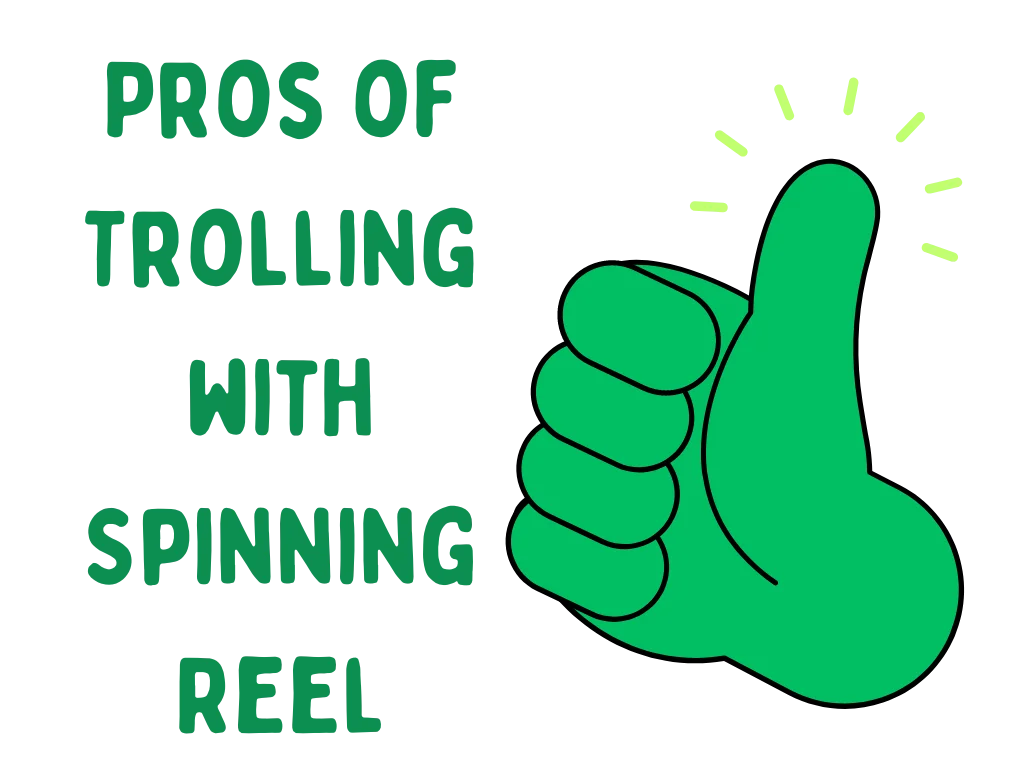
Although a spinning reel basically puts you at a disadvantage while trolling, there are still some benefits of trolling with a spinning reel.
First of all, the retrieval rate is much higher. With a larger and more efficient reel handle, you can retrieve the line much more quickly as compared to other reels.
As you know, the longer a fish remains in the water, the more chances you have of losing it. Hence, by reeling in the fish quickly, you increase your chances of capturing it and adding it to your cooler.
If you get a spinning reel with front drag instead of rear-positioned drag, it will provide easier adjustment while trolling.
The drag adjustments on the spinning reel, the macro ones, allow you to quickly drain the energy of the fish and bring it to your boat.
Cons of Trolling with Spinning Reel
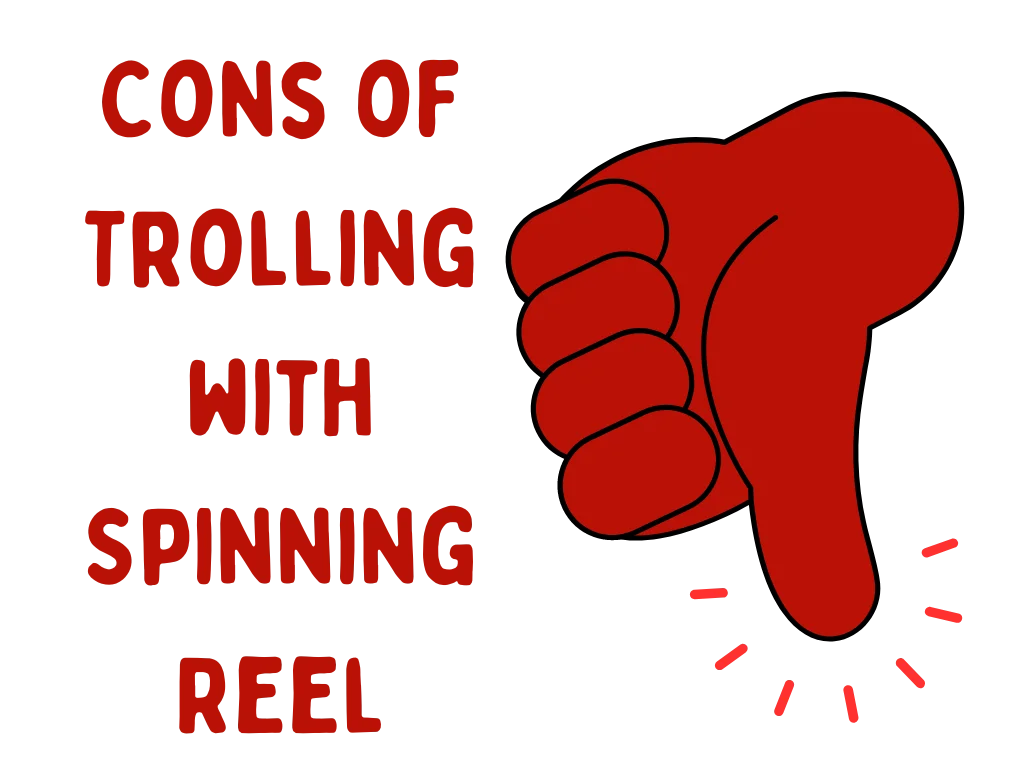
The biggest problem you face while using a spinning reel for trolling is the inability to preset drag increments. You cannot set increments on drag before catching the fish.
While it is possible on bait runners if you set drag too high while trolling, there is a high chance the line will snap when the fish catches the lure because of the pressure.
Hence, you will have to set the drag initially at half the pressure. Then when the fish strikes and catches the line, you will have to gradually increase the drag to the required limit.
Making these adjustments while fighting a fish can be quite troublesome.
Another major disadvantage is that spinning reels do not have lugs or metal rings. Reels that are designed for trolling have lugs that can be used for clipping a harness.
Without the metal ring to strap the harness on, the fight with the fish will be much tougher. Hence, you will have to work harder with your arms to bring the fish to the boat.
Adding to this, line twist is also an issue that you might face when trolling with a spinning reel. Although using a braided line compensates for this issue pretty much, it still remains a possibility.
If you reel while the fish takes the drag, you can create the problem of line twist. The problem is much worse when you are using a monofilament line.
Line capacity is also a major issue when trolling with a spinning reel. Bait-runners made for trolling have a large line capacity which allows them to troll for bigger fishes and longer distances.
However, spinning reels lack this excess line. Even the largest of spinning reel sizes hardly meet the minimum yard length required for trolling.
There is also a good chance you will get a bird’s nest tangling in your reel if you don’t use the lure in the right manner.
Importance of Drag
In simple words, if you don’t set the drag limits right and make adjustments immediately once the fish strikes, the line will snap.
Trolling is the type of fishing where the reel and rod will have to face a sudden jerk when the fish catches the lure.
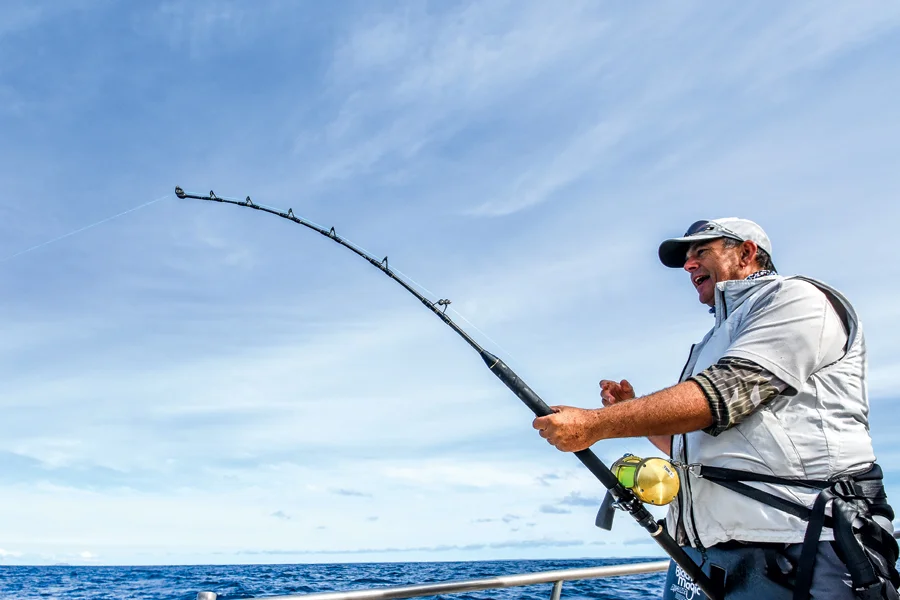
At that moment, regardless of the size of the wish, the rod, the line, the reel, and all the internal components of the reel will have to experience intense pressure. Check Do Spinning Reels Backlash?
Setting the drag limit right will allow the fish to take the lure along with some line from the spool. After the initial run, you can keep on increasing the drag gradually until you tire the fish and then retrieve it to grab it.
It will require both skill and experience, as you won’t be able to pull it off right off the bat.
Hence, when you are purchasing a spinning reel, you must ensure it has massive drag capacity, so you can make considerable adjustments while trolling.
Check What Size Spinning Reel Should I Get?
How to Avoid Tangles While Trolling with a Spinning Reel?
Never open the bail arm to let the line out when you are putting the lure behind the boat. That will get you highly messy bird nest tangles. Trust me, you don’t want to see that.
Instead, you should adjust the drag limit to half the setting that you need. Hence, when you put the lure in the water, the pressure will automatically pull the line and give you the distance you need.
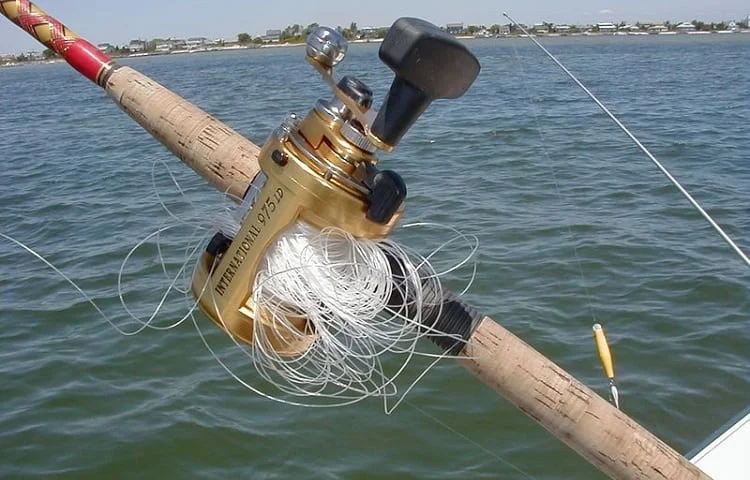
The drag will stop the line from tangling and give you the perfect setting for trolling.
There is also another, more effective way, to prevent the line from tangling. You can use swivels on the line to avoid this issue.
Yes, by swivels I mean more than one. The snap swivel will allow you to connect your leader line to the lure and the other swivel will connect the leader line to the main line.
These two swivels will provide you with double security against tangling or line twists.
Tips to Help Beginners
Trolling might seem very simple at first glance, but it is not with a spinning reel. It will be challenging, so unless you are prepared, both your reel and your hopes will be destroyed.
There are a few things you must keep in mind before you go trolling with a spinning reel.
First of all, plan for the event. Trolling with a spinning reel will require planning, skill, coordination, and plenty of practice. You will need to research and select the ideal reel and rod for the specific fish you are going after.
Research the area you are going to be trolling in. Better to get an aerial picture of it and plan a route beforehand.
You can take a fish finder with you to help you track the school of fish. It will save plenty of time that you would have spent otherwise locating the fish.
Test the reel drag beforehand. Set it to half the pressure and then count how many turns you will need to get the drag to full fighting potential. Hence, you will know exactly how many turns you need once the fish strikes the hook.
Another thing you must keep in mind is to never reel against the drag. If drag turns because of cranking of the reel, you can pump the rod to gain line. Let the fish run and try to tire it by increasing drag gradually.
If you are a complete beginner, then you should start with the beginner steps. Don’t go after the largest fishes just yet. Practice first, with fewer lines from your boat. You can use three lines in the beginning.
Do proper homework on the fishing species you are going after, the required depth and speed of the lure, and the area of water you are going into. Proper research will always lead to good results.
Frequently Asked Questions
Wrapping Up!
Yes, it is true that spinning reels are not ideal for trolling, but that doesn’t mean it is impossible to troll with them.
In the end, your success depends on your personal dedication and skill level. With enough practice, you can take home a nice meal for everyone.
Trolling with spinning reels is challenging, but fishing has always been about challenges. If it was easy, it wouldn’t be fun.
Next time you are planning to troll with a spinning reel, make sure you have made all the necessary preparations we have shared in the above guide. Take baby steps in the beginning and eventually, you will refine your trolling skills.
If you have any questions, you can drop them in the comments section below and I will get back to you as soon as I can.
